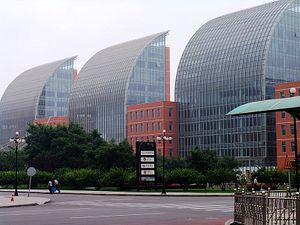Last week, the State Intellectual Property Office (SIPO) of China announced that in absolute numbers, the country had processed more invention patents in 2014 than any other country. In reporting this, the official news agency Xinhua also cited the belief of some experts that the country’s patents “still lack a competitive edge.”
The news report mentioned that one-third of the patents across all sectors had come from foreign applicants. This bears out the findings of a Chinese study in 2012 that in the information technology sector, arguably the most important, just over half of patents granted in Beijing in 2010 had come from foreign-invested R&D enterprises.
The Xinhua report on 2014 patents concluded with an observation that it is the government’s policy to boost innovation through improved protection of intellectual property rights (IPR). Of course, not everything in China is rosy when it comes to IPR protection, but the policy settings and legislative arrangements for this are now quite sound. It is weak enforcement, both in investigation and judicial process, where China lets itself down.
There are other areas of policy and practice that need attention to foster innovation. Some basic business practices that are common in the United States, Japan, and Europe may not be so familiar in China. These practices include patent acquisition and patent commercialization. A 2014 Chinese study from researchers in Wuhan on the country’s high tech industries actually found that these firms may be putting too much emphasis on patent protection, and not enough on the other patent practices. The authors concluded that that an emphasis on patent protection “conducted by companies themselves is adverse to technology diffusion and transfer” and “will impede the absorption and integration of external technologies into high-tech enterprises.” The authors recommended that to “survive in the current international competitive situation,” Chinese high-tech enterprises need to enhance the acquisition of patents developed by others, as well pay more attention to wider commercialization of patents.
As China’s leaders fully appreciate, setting up a national innovations system is not easy. A decade ago, they took the radical and politically difficult decision that the private sector (market forces) had to be the main driver of innovation. For a country espousing socialism of any kind, that was an historic turning point. But the time lag in kick-starting the much desired private sector lead has been marked. China has not been able to stimulate the necessary investment from the private sector firms in university-based R&D that has proven elsewhere to be an essential underpinning of high-tech innovation. Chinese leaders have had to continue with increases in state investment in R&D as a substitute.
The low profile of venture capital has also been problematic. First recommended by the Chinese Academy of Sciences in 1997 and allowed by regulation in 2001, venture capital began accumulating in the billions of dollars by the middle of the last decade. But the pace has been too slow for the leadership, who just this year decided on state intervention “yet again” in announcing the creation of a government-owned venture capital fund valued at $6.5 billion. According to Reuters, the government had in December 2014 also liberalized the investment regime for insurance companies, allowing them to participate in venture capital activities.
China’s leaders are fully informed of the full range of economic levers available to them to foster a national innovation system and are working feverishly on as many as they can. They fail however in understanding the social and individual foundations. As the leaders deepen the latest round of thought control in universities and a new push for orthodoxy in artistic circles, they need to know they are further retarding China’s potential for innovation.
This article was previously published in New Europe.

































